Introduction:
Ever felt a sticky, clammy sensation when you step into your home? That’s the telltale sign of excess humidity. It’s not just uncomfortable, it can also lead to a host of issues like mold growth, aggravated allergies, and damage to your home’s structure.
But fear not! The solution to your high humidity woes is within reach. We’re here to guide you on a journey to a more comfortable, healthier home environment.
Our comprehensive guide will delve into the causes of high indoor humidity, and more importantly, how to effectively tackle it. We’ll explore a variety of methods, from simple lifestyle changes to investing in dehumidifiers.
So, get ready to breathe easy and say goodbye to that sticky feeling. Let’s embark on this journey to lower the humidity in your house, ensuring a fresh and healthy living space. Stay tuned!
Why is my house so humid?
High humidity levels in your home can be attributed to numerous factors. One of the most common reasons is poor ventilation. When air doesn’t circulate freely, it traps moisture, causing the humidity levels to rise. Another factor could be your geographical location. If you live in a humid climate, your house is likely to reflect the same.
Water leaks in your home can also contribute to high humidity levels. Even a minor leak can significantly increase the moisture content in your home. In addition, certain household activities such as cooking, showering, and even breathing can add to the humidity levels.
To combat this, there are several strategies you can employ. One of the most effective ways is to use a dehumidifier. This device works by extracting excess moisture from the air, thereby reducing the humidity levels.
Another strategy is to improve the ventilation in your home. This could involve installing exhaust fans in areas prone to high humidity such as the kitchen or bathroom.
- Sealing leaks
- Limiting indoor plants
- Avoiding drying clothes indoors
These are also effective ways of reducing humidity levels in your home.
Remember, maintaining a balanced humidity level in your home is essential for your comfort and health. High humidity can lead to mold growth and exacerbate allergies. Thus, it’s important to address this issue promptly and effectively.
How does humidity affect my health?
High humidity levels in your home can have a significant impact on your health. It can trigger allergies, cause respiratory problems, and even lead to the growth of mold and mildew. When you breathe in these allergens, it can worsen asthma symptoms and cause other respiratory issues.
Lowering humidity in your home can help alleviate these health issues. There are various ways to reduce humidity levels, such as using dehumidifiers, improving ventilation, and using moisture-absorbing materials.
- Dehumidifiers: These devices work by removing excess moisture from the air, helping to maintain an ideal humidity level in your home.
Increasing ventilation is another effective method. This can be as simple as opening windows to allow fresh air in and stale, humid air out. In bathrooms and kitchens, where humidity levels are often higher, exhaust fans can be particularly useful.
Moisture-absorbing materials, such as silica gel and calcium chloride, can also be used to lower humidity levels. These substances absorb excess moisture from the air, helping to maintain a healthy humidity level. Her’s a few that you could consider. Read the manufacturers instructions for how much and how to use:
| Silica Gel Packets, Moisture Absorbers, 10 Gram Desiccant Packs | Wisesorb 7 LBS Calcium Chloride Desiccant |
|---|---|
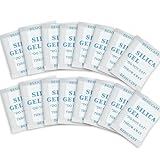 |
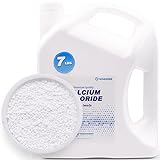 |
| Purchase on Amazon | Purchase on Amazon |
Remember, maintaining a balanced humidity level in your home is not just about comfort, it’s also about preserving your health.
What appliances reduce home humidity?
There are several appliances designed to lower humidity within the home. A dehumidifier is an excellent option, capable of extracting excess moisture from the air, thereby reducing the humidity level. This appliance is particularly effective in damp areas such as the basement or bathroom.
Another appliance that can help lower indoor humidity is an air conditioner. Air conditioners not only cool the air but also remove moisture, making your home less humid. For those living in dry climates, an evaporative cooler might not be the best choice as it adds moisture to the air.
- Dehumidifier: Extracts moisture from the air, reducing humidity levels.
- Air Conditioner: Cools the air and removes moisture, lowering humidity.
In addition to these appliances, using exhaust fans in your kitchen and bathroom can also help reduce humidity. These fans pull the humid air out of your home and vent it outside.
Incorporating these appliances into your home can significantly lower humidity levels, creating a more comfortable living environment. Remember, maintaining a balanced humidity level is not only important for comfort but also for preventing the growth of mold and mildew, which thrive in damp conditions.
Remember to regularly maintain these appliances to ensure they’re working efficiently. Proper maintenance can also extend the lifespan of these appliances, providing you with long-term solutions for managing home humidity.
Can plants lower indoor humidity?
Yes, certain plants can help lower indoor humidity. Plants such as Boston ferns, English ivy, and peace lilies are known for their ability to absorb excess moisture from the air, acting as natural dehumidifiers. These plants intake water through their leaves in a process known as transpiration, which can contribute to a decrease in indoor humidity levels.
It’s important to note, however, that not all plants have the same effect. Some plants, like cacti and succulents, require dry conditions and won’t be effective in reducing indoor humidity. Additionally, overwatering your plants can actually increase humidity levels, so it’s crucial to maintain a proper watering schedule.
Here are a few plants that are effective in reducing humidity:
- Boston Ferns
- English Ivy
- Peace Lilies
In addition to using plants, you could employ a multi-faceted approach to lower indoor humidity. This could include all the methods we discuss, like using dehumidifiers, improving ventilation, sealing leaks and reducing the number of water sources in your home. By combining these methods with the use of humidity-reducing plants, you can effectively control and maintain the humidity levels in your home, creating a comfortable and healthy living environment.
Remember, managing indoor humidity is not just about comfort, it’s also about preventing issues such as mold growth and other potential health risks. Therefore, it’s worth exploring all options, including the use of plants, to ensure your home remains a safe and comfortable space.
Does air conditioning lower humidity?
Absolutely, air conditioning systems play a vital role in reducing humidity levels in homes. As the hot air passes over the cooling coil of an air conditioner, it not only cools down but also loses a significant amount of its moisture content, which is condensed on the cool surface of the coil and drained away, thereby lowering the humidity.
However, the effectiveness of an air conditioner in reducing humidity largely depends on its size and the set temperature. An oversized air conditioner may cool the house quickly, but it might not run long enough to remove the humidity. Thus, it’s essential to have a properly sized air conditioner for your house.
Here are some tips on how to use your air conditioner to lower humidity:
- Set your air conditioner to ‘dry’ or ‘dehumidify’ mode, if available.
- Ensure regular maintenance of your air conditioner to keep it running efficiently.
- Use a programmable thermostat to maintain a consistent temperature and humidity level.
What is the ideal indoor humidity?
Ideal indoor humidity levels should range from 30% to 50%, according to experts. When the humidity in your house exceeds this range, it can create a breeding ground for mold, dust mites, and other allergens, negatively impacting the air quality. This can lead to various health issues, including allergies and respiratory problems.
To maintain the ideal indoor humidity, it’s important to monitor the levels regularly. This can be done using a hygrometer, a device that measures the amount of moisture in the air. If the humidity is too high, there are several methods to lower it. Here’s a few to consider:
| 2pack Mini Digital Hygrometer Thermometer, Indoor Humidity Monitor | ThermoPro TP49 Digital Hygrometer Indoor Thermometer Humidity Meter | ThermoPro TP50 Digital Hygrometer Indoor Thermometer Room |
|---|---|---|
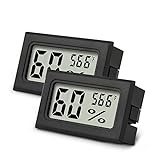 |
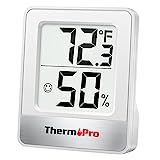 |
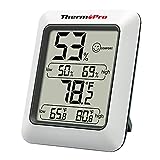 |
| Purchase on Amazon | Purchase on Amazon | Purchase on Amazon |
How to use dehumidifiers effectively?
Dehumidifiers are an excellent tool for reducing excessive humidity in your home. To ensure their effectiveness, it’s crucial to choose the right size for your space. Measuring your room’s square footage and matching it with the dehumidifier’s capacity can significantly impact its performance.
Placement is another important aspect to consider. Position your dehumidifier in the area where humidity is highest, often the basement, bathroom, or kitchen. Ensure it’s away from walls and furniture for optimal air circulation.
Regular maintenance is key in how to lower humidity in house. Clean the dehumidifier’s filter every few weeks to keep it running efficiently. Empty the water tank regularly, or consider a model with a continuous drain feature if emptying the tank becomes tedious.
Here are some other tips on using a dehumidifier effectively:
- Use a hygrometer to monitor humidity levels. Ideal indoor humidity is between 30-50%.
- Keep doors and windows closed when the dehumidifier is running to prevent humid outside air from entering.
- Use the dehumidifier in conjunction with air conditioning for best results.
Remember, while dehumidifiers are a great solution, they’re not the only way to combat high humidity. Consider other methods such as improving ventilation, using moisture-absorbing products, or installing exhaust fans for a comprehensive approach to managing your home’s humidity levels.
Are there natural ways to lower humidity?
Indeed, there are several natural ways to lower humidity in your home. One of the most effective methods is to increase ventilation. Opening windows and doors allows fresh air to circulate, reducing the concentration of humid air.
Another method is to use plants that absorb humidity. Plants such as English Ivy, Peace Lily, and Reed Palm are known for their ability to absorb excess moisture from the air.
You can also consider using natural absorbents such as rock salt or baking soda. Placing bowls of these substances around your home can help to absorb excess moisture.
It’s important to note that the effectiveness of these methods can depend on the size of your home and the severity of the humidity problem. If these methods are not sufficient, you may need to consider investing in a dehumidifier.
- Increase Ventilation: Open windows and doors to allow fresh air to circulate.
- Use Plants: Certain plants can absorb excess humidity from the air.
- Natural Absorbents: Rock salt and baking soda can absorb moisture.
- Dehumidifier: If other methods are not sufficient, consider investing in a dehumidifier.
Remember, maintaining a balanced humidity level in your home is not just about comfort, it’s also about health. High humidity can lead to mold growth and exacerbate allergies. Therefore, it’s essential to take steps to lower humidity levels in your home.
Conclusion: Tackling High Humidity in Your Home
In this post, we have covered a wide array of topics surrounding the central question, “how to lower humidity in house”. We’ve explored why your house may be excessively humid and how this can impact your health. We’ve also discussed various appliances that can help you reduce home humidity, including air conditioners and dehumidifiers, and how to use them effectively.
We’ve also touched upon the role of indoor plants in controlling humidity levels and the ideal indoor humidity for a comfortable and healthy living environment. Furthermore, we’ve looked into natural ways to lower humidity, providing a holistic approach to this issue.
The importance of maintaining optimal humidity levels in your home cannot be overstated. It’s not just about comfort, but also about preserving your health and the condition of your home. High humidity can lead to mold growth, which can cause a variety of health issues. Therefore, it’s essential to take proactive measures to control humidity levels.
In terms of future developments, advancements in technology may bring about more efficient and eco-friendly ways to manage indoor humidity. So, keep an eye out for these innovations. In the meantime, implementing the tips and advice provided in this post can significantly improve your home’s humidity levels, contributing to a healthier and more comfortable living environment.




